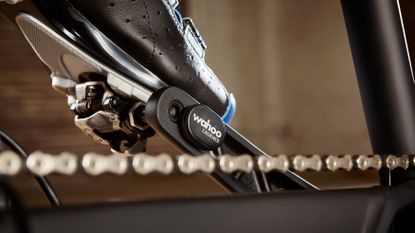It's that time of the year again: the days are getting shorter and the weather a bit gloomy which might prevent some of the less hardcore (i.e. sane) cyclists to venture out onto the roads. But if the same riders want to carry on cycling, what can they do? For one, they can consider using a turbo trainer for indoor training.
The best turbo trainers have come a long way and by now, many of them can effectively recreate the sensation of riding your road bike outdoors, only in a safer and less weather-dependent way. Couple these smart trainers with an interactive training app to keep you entertained and a fan to keep you cool and you might end up spending more time in your pain cave, riding on a turbo, than outside.
As exciting as indoor cycling is, it can be a bit daunting at first. You have to mount your bike on the trainer – unless it's the wheels-on variety – and fiddle around with cassettes etc.; definitely more hassle than jumping on an exercise bike. Where should you start?
Asking a turbo trainer expert is probably a good idea and if you haven't got one on speed-dial, fear not as we do. We asked Tyler Harris, Cycling Product Manager at Wahoo Fitness, to answer some of the most searched for turbo trainer questions we could find. And answer he did!
Below you'll find all his insights that will hopefully help you get started in your turbo trainer journey.
- Fit over 40: fitness experts recommend exercise, diet and recovery tips for Millennials
Is a turbo trainer bad for your bike?
Although there have been instances of damage when riders have incorrectly mounted their bikes to indoor trainers, turbo trainers are perfectly safe when appropriately fitted. All of Wahoo's testing has shown that riding on turbo trainers produces the same (or less) load to your bike compared to when ridden outdoors.
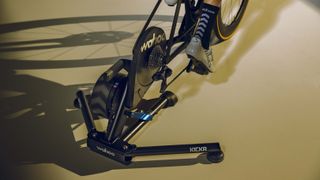
Is it okay to leave the bike in the trainer?
Certainly. If you're lucky enough to have a dedicated indoor training space – 'pain cave' – many riders choose to leave their bikes set up on the turbo trainer permanently. Leaving the bicycle on the turbo doesn't pose any additional risk to the bike and, in many cases, is preferential to storing it outside in the cold and wet. For wheel-on trainers, though, you'll just need to remember to inflate the tires to the correct pressure before each ride.
Is a turbo trainer good for weight loss?
Yes. Training on a turbo trainer is one of the most efficient ways to improve fitness and burn fat (if that's part of your training goal). We've found that riders who introduce regular, short and intense turbo sessions often improve more than those that subscribe to the old school philosophy of one weekly 5-hour Sunday ride.
Getting into the habit of riding regularly and above threshold pace is hard, but having a smart trainer at home can help you plan your workouts around other commitments. What's more, with a host of interactive online training platforms like SYSTM, training is more immersive than ever!
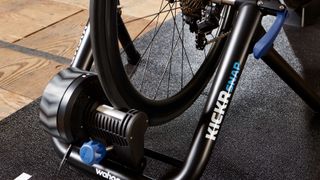
Do turbo trainers ruin tires?
No. This has become a bit of an urban myth with wheel-on turbo trainers like the KICKR SNAP. All of our testing has shown similar wear to a tire when compared to the road. In fact, the road has a lot more debris which often leads to cuts and tire damage which shortens their lifespan.
We would, however, recommend wiping your tyre down before each turbo session after riding on the road to ensure any stones or glass aren't pushed into the tyre.
Can you use normal tires on a turbo trainer?
Trainer tires will provide more life compared to a regular road tire but can be more of a pain to swap back and forth.
How long should you use a turbo trainer?
It all depends on your training goals and personal preference, really. Some users – and professional athletes – train almost exclusively on their turbo trainers and then race outdoors. Meanwhile, others may only use a trainer when the weather is terrible.
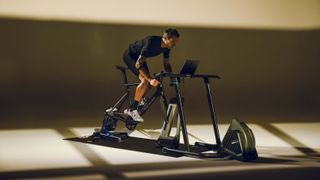
Is turbo training better than training on the road?
In most circumstances, yes. While we all love the sense of freedom and exploration that riding on the road provides, indoor riding is often preferential when it comes to training benefits.
It's far easier to complete structured efforts indoors without the interruptions of traffic lights and other road users. Not to mention a lot safer - whilst simulating race-winning efforts outdoors can be fun, you often don't have the luxury of closed roads like during a race or sportive.
Do you need to change gears on a smart trainer?
It really depends on what type of mode you're using. All of our Wahoo smart trainers offer riders the option of riding in standard or ERG mode. When using the standard mode, for instance, you'll want to shift gears just like you would outdoors.
However, when following a structured workout on a platform like SYSTM, it's much easier to put the trainer in ERG mode. This then changes the resistance automatically so you can focus solely on the session and be confident you're producing precisely the targeted amount of power.
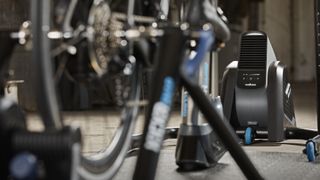
How do you set up a smart turbo trainer?
This varies slightly between different brands and models, but you can find a guide on how to set up Wahoo units here.
How often do you need to service a turbo trainer?
Wahoo trainers are designed so that you don't need to do any maintenance other than lubing your chain and replacing your chain/cassette. Just like you would normally.
Can you use a bike trainer without quick release?
Yes. All Wahoo smart trainers support 142/148 thru-axles. These are included within the box as standard for the KICKR and KICKR CORE and can be bought separately as an adapter kit with the KICKR SNAP.
Are titanium skewers worth it?
For riding on a trainer, there are no real benefits. For riding outdoors, however, you'll save weight.
